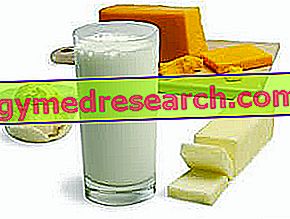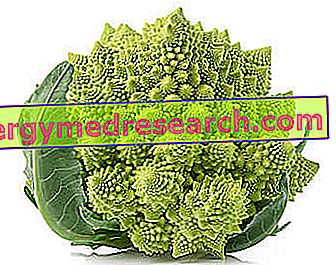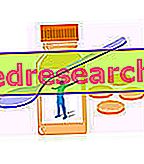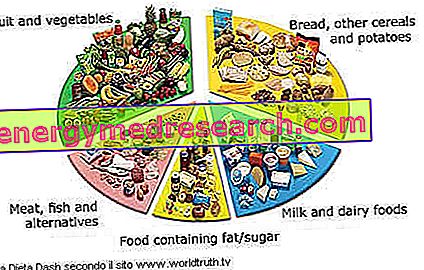Importance of Football and Lack of Risk
Calcium deficiency, resulting from an insufficient dietary intake or from a bad intestinal absorption, does not produce evident symptoms in the short and medium term. The concentrations of the mineral in the blood (calcemia) are in fact kept within rather narrow limits by a fine endocrine mechanism, which fills any deficiencies at the expense of the bone mineral heritage. Only in the presence of particular diseases, especially at the level of the parathyroids or the kidneys, the lack of calcium in the blood (hypocalcemia) produces symptoms worthy of note, and in extreme situations can even be fatal.

Foods rich in calcium
Milk, yogurt and cheese are the richest food sources in calcium; outside the family of dairy products, discreet contributions are provided by fish, broccoli, rocket, cabbage, cabbage, legumes and spinach. We recommend a quick reading of the "calcium absorption" article to also evaluate the qualitative aspect of these food sources (bioavailability of the mineral contained in the food).
Recommended Calcium Intake
| Adequate calcium intake (AIs) (Food and Nutrition Board) | ||||
| Age | Men | Women | expectant | Nourish |
|---|---|---|---|---|
| 0-6 months | 210 mg | 210 mg | ||
| 7-12 months | 270 mg | 270 mg | ||
| 1-3 years | 500 mg | 500 mg | ||
| 4-8 years | 800 mg | 800 mg | ||
| 9-13 years | 1, 300 mg | 1, 300 mg | ||
| 14-18 years | 1, 300 mg | 1, 300 mg | 1, 300 mg | 1, 300 mg |
| 19-50 years | 1, 000 mg | 1, 000 mg | 1, 000 mg | 1, 000 mg |
| 50+ years | 1, 200 mg | 1, 200 mg | ||
| Some Calcium-Rich Foods | |
| Food | Ca (mg / 100g) |
|---|---|
| Grana - Parmesan | 1200 |
| Fontina - Mozzarella Caciocavallo - | 700-900 |
| Scamorza - Taleggio | 400-500 |
| Cow milk ricotta | 300 |
| Dried sweet almonds | 220-240 |
| Rocket, broccoli, spinach, turnips | 50-160 |
| Yogurt | 90 - 150 |
| Cow's milk | 110 - 120 |
People at risk of calcium deficiency
Although a severe food shortage is quite rare, there are quite a few people who do not take enough calcium with their diet. In most cases these are moderate deficits, but which over time can make the bones less resistant, more fragile and prone to fractures in old age. In all these cases it is useful to use specific calcium supplements assisted by vitamin D, an essential micronutrient for adequate mineral absorption in the intestine.
WOMEN IN THE POSTMENOPAUSAL PERIOD: we have already mentioned how the decrease in estrogen impoverishes the bone mineral heritage and decreases the ability to absorb calcium at the enteric level. It is estimated that after menopause bone mass decreases by 3-5% per year, a percentage which is progressively reduced to below 1% after the age of 65. Therefore, especially for menopausal women who do not follow a hormone replacement therapy, the combined integration of vitamin D and calcium is strongly recommended (other times appropriate drugs such as bisphosphonates are used).
WOMEN WITH AMENORREA AND TRIADE OF ATLETIAN WOMEN: we talk about amenorrhea in the absence of the menstrual flow (primary if this has never occurred, secondary if, after presenting, we normally do not reappear in the following three months). This condition, be it pathological (hormonal dysfunctions, general diseases) or physiological (pregnancy, breastfeeding, menopause), inevitably accompanies a decrease in circulating estrogen. Often, in the fertile period, the amenorrhea is the unpleasant consequence of anorexia nervosa, too restrictive diets, severe stress and particularly intense physical activity.
There is talk of a triad of the female athlete to highlight the three factors that characterize this syndrome: eating disorders, osteoporosis and amenorrhea. It should however be pointed out that in healthy women, normally fed and of any age, physical exercise induces a considerable improvement in bone health; in this sense, loading exercises are recommended, such as running, dancing, musical courses in the gym and multi-joint exercises with free weights (such as lunges and squats). This kind of activity, in which the body weight and the overloads weigh on the skeleton, determines a general bone adaptation to mechanical stresses, with a consequent increase in the skeletal mass. To learn more, we suggest reading the article: Osteoporosis and sport.
LACTOSE INTOLERANT INDIVIDUAL: the absence of dairy products in the diet (some cheeses - the mature ones - can still be taken, especially if the degree of intolerance is moderate) often leads to calcium deficiencies. If intolerance is such as to cause gastrointestinal disorders, such as meteorism, flatulence, diarrhea and nausea, even after the ingestion of small quantities of milk or cheese, supplementation with calcium supplements may be necessary (generally calcium is used carbonate or calcium citrate, more expensive but better absorbed in conditions of poor gastric acidity).
VEGETARIANS: more than vegetarians, the risk of an important calcium deficiency affects vegans (strict vegetarians) more closely, that is, those individuals who exclude animal-derived foods from their diet (eggs, milk, cheese, dairy products, etc.). ). In addition to the reduced food intake, it is necessary to consider the high intake of phytates and oxalates, anti-nutrients that reduce the intestinal absorption of the mineral, favoring the development of calcium deficiencies. Therefore, if you follow a vegan diet, especially when it has not been drawn up by a nutritionist or dietician, it is important to choose rich vegetable sources of calcium or to use specific supplements.



